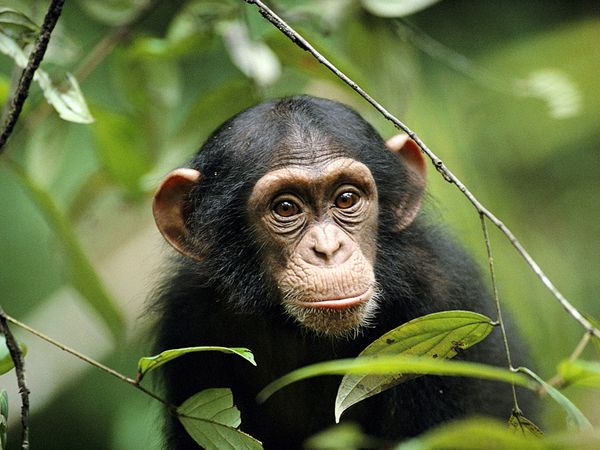From the onset of the COVID-19 pandemic, primatologists were deeply concerned about the susceptibility of great apes to the virus. To prevent transmission to both captive and wild populations, they took immediate action by closing parks and sanctuaries to visitors. These precautionary measures successfully prevented outbreaks among wild apes, but they also drastically impacted the financial stability of conservation groups and government agencies that relied heavily on tourism revenue. Over a year into the pandemic, the severe shortfall in income has prompted a reevaluation of funding models for ape conservation that do not rely solely on tourism.
On January 11, 2021, a worrying event occurred: two western lowland gorillas at San Diego Zoo Safari Park tested positive for SARS-CoV-2. This confirmed the fears that great apes were indeed susceptible to the virus. Since March 2020, when the IUCN great ape specialists issued advisories, most great ape tourism sites had already closed to mitigate this risk. However, no one anticipated the prolonged duration of the pandemic and its extensive impacts on conservation efforts.
“COVID affected every single aspect of what we do,” says Karen Kemp, communications director of Friends of Bonobos, which manages Lola ya Bonobo, the world’s only bonobo sanctuary in Kinshasa, Democratic Republic of Congo (DRC). The pandemic delayed a planned release of bonobos into the wild and stalled talks about starting a bonobo trekking industry. Although outreach programs were initially put on hold, they have since resumed, reaching 1,000 children through school visits. However, the sanctuary faced significant challenges, including a surge in rescued bonobo babies, possibly due to increased bushmeat hunting or successful outreach efforts, coupled with a substantial drop in income from visiting researchers.
Great ape researchers had long been prepared for such a health crisis, having implemented measures like masks and social distancing to prevent disease transmission between humans and apes. Organizations like Gorilla Doctors, dedicated to the health of mountain and eastern lowland gorillas in Uganda, Rwanda, and the DRC, introduced daily temperature checks, sanitizing protocols, and mandatory mask-wearing in parks. These measures were critical in preventing an outbreak, though they introduced challenges for veterinarians relying on visual health assessments.
The halt in tourism had immediate and severe economic consequences. In Rwanda's Volcanoes National Park and Uganda's Bwindi Impenetrable Forest, the mountain gorilla trekking industry had thrived, benefiting both conservation and local economies. The sudden stop in tourism led to a significant loss of income, estimated at $120,000 per day in Rwanda from permit fees alone. This loss quickly translated into increased subsistence poaching and reduced law enforcement at protected sites due to funding cuts.
Sanctuaries like Sweetwaters Chimpanzee Sanctuary in Kenya also suffered, closing to visitors and researchers, leading to an 85% revenue loss. The key to safely resuming tourism lies in vaccination. Organizations are advocating for mandatory vaccinations for tourists to mitigate the risk of disease transmission to the apes. Rwanda has prioritized vaccines for tourism workers and conservationists, while Uganda has launched vaccination drives in collaboration with various conservation groups.
As tourism revenue dwindled, conservation sites faced rising costs due to enhanced health and safety measures. Emergency grants and private donations provided some relief, but many sites had to explore alternative revenue streams. For example, Gorilla Conservation Coffee, a business linked to CTPH, continued operating by exporting coffee despite reduced local sales. However, finding a sustainable funding model that matches the income and land protection benefits of tourism remains challenging.
The pandemic has highlighted the critical link between environmental health and human well-being. Organizations like Gorilla Doctors, UNEP’s Great Apes Survival Partnership, and CTPH are dedicated to the One Health concept, addressing human, animal, and environmental health together. This integrated approach is essential for future-proofing conservation efforts against pandemics, political instability, and other global crises.
The ongoing pandemic has underscored the need for creative, sustainable solutions to conservation funding. While tourism will remain a significant part of the equation, diversifying income sources and strengthening community involvement in conservation are vital steps toward a resilient future for Africa’s great apes.
Source: National Geographic
#GreatApeConservation #COVID19Impact #WildlifeProtection #SustainableTourism #PrimateHealth #OneHealth #ConservationFunding #GorillaTrekking #BonoboSanctuary #WildlifeTourism #EcoTourism #AfricanWildlife #PostPandemicConservation
4o
